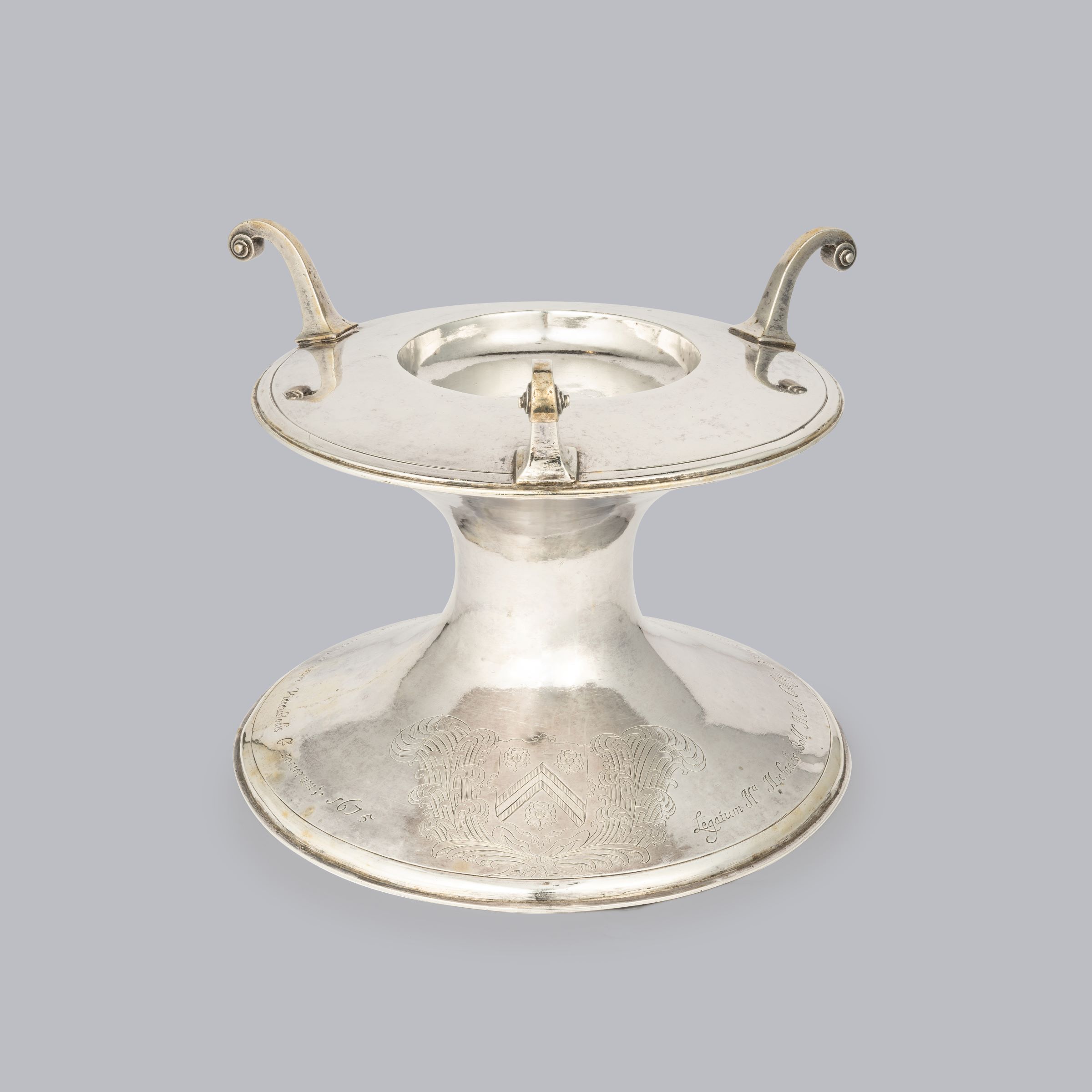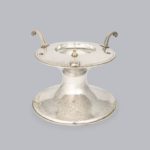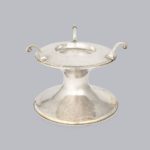
Salt, 1664 [Si11]
London, 1664; maker’s mark worn
Silver: H. 19.8 cm, D. 24 cm, 1363 g
A spool-shaped salt with a rounded well. Around the rim three brackets with scrolling volutes. Engraved with the arms of Bold and the arms of Wykeham.
Inscribed around the base: Legatum Mri Michaelis Bold M:Art. Collegii B[ea]ta Maria Winton / quondam socii, in usum Vicecustodis & sociorum: 1675 [The legacy of Mr Michael Bold, Master of Arts, sometime Fellow of the College of the Blessed Mary of Winchester, for the use of the Vice-Warden and Fellows: 1675].
This distinctive form is variously referred to as a ‘spool’, ‘scroll’, or ‘pulley’ salt. It first appears in England in the 1630s and the latest known example is from 1671/72. Christopher Hartop (British and Irish Silver in the Fogg Art Museum) lists a total of thirteen known examples, including the present piece. It is the final variation on the theme of the ‘great’ communal salt; by the late seventeenth century the fashion was for individual salts placed between diners. The pulley salt at Winchester is particularly large, apparently the largest of all surviving examples of the form. The three scrolled arms were intended to support a dish, perhaps bearing fruit. Often the scrolls are separately hallmarked, but not here.
The donor, Michael Bold, was a Scholar of Winchester College (1620); Fellow of New College (1627-40); Fellow of Winchester (1640-67). The College accounts for 1675-6 (first quarter) record payment of five shillings ‘to the servant of Mr Bold for bringing the large silver salt bequeathed to the College’.
Literature: Percy MacQuoid, ‘The Plate of Winchester College’, The Burlington Magazine, vol. 2, no. 5 (July 1903), p. 66; N.M. Penzer, ‘Scroll Salts’, Apollo Annual 1949, p. 49; Charles Oman, ‘The Winchester College Plate’, The Connoisseur (January, 1962), p. 29 (illustrated); Philippa Glanville, Silver in Tudor and Early Stuart England (London, 1990), p. 292; Ellenor M. Alcorn, English Silver in the Museum of Fine Arts Boston, 2 vols (Boston, 1993), vol 1, p. 122; C. Hartop, British and Irish Silver in the Fogg Art Museum (Cambridge, Mass., 2007), pp. 34-35 (illustrated).
Provenance: Bequest of Michael Bold, 1675
Location: Treasury, Gallery 1

